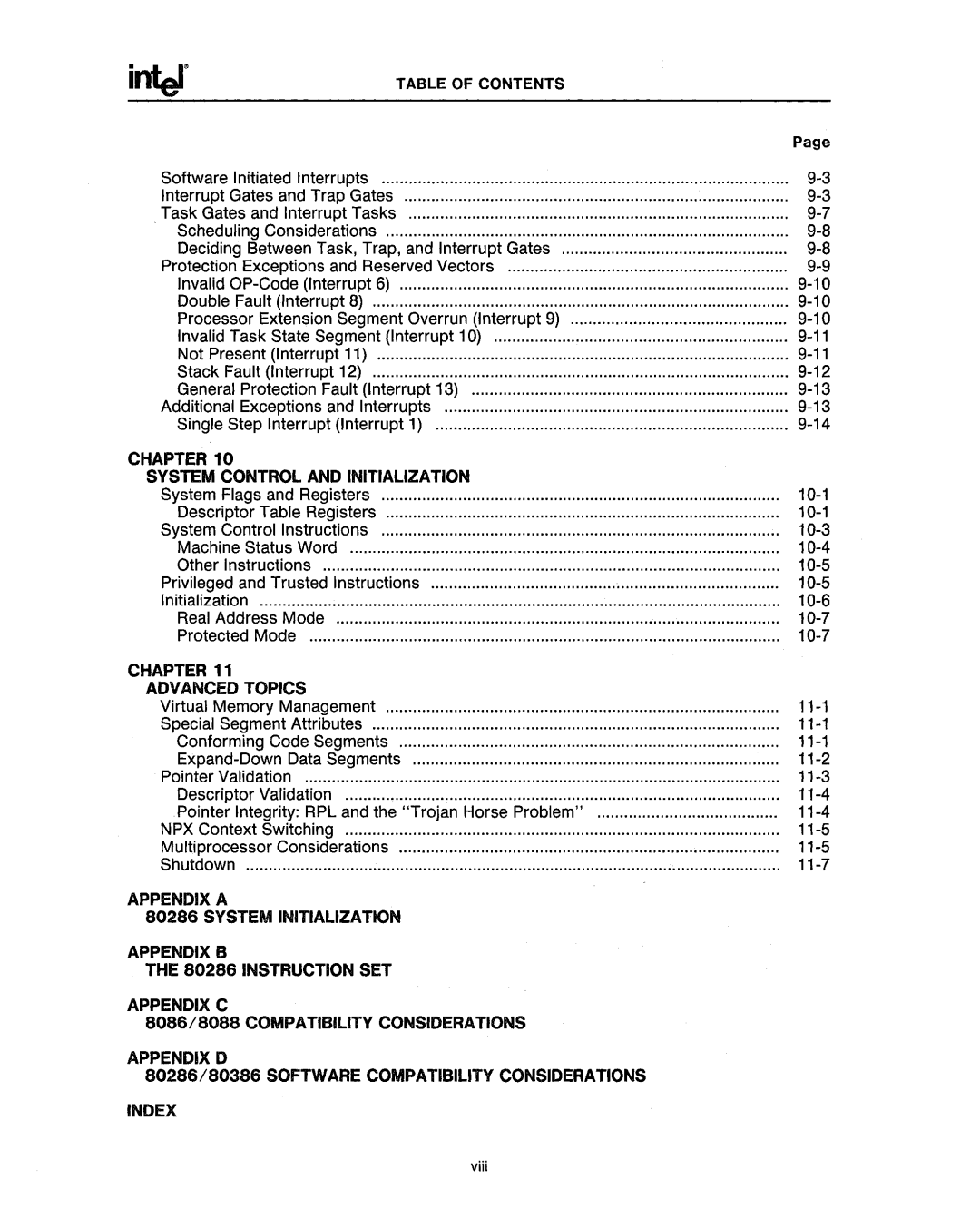
TABLE OF CONTENTS |
|
|
|
| Page |
Software Initiated Interrupts | ||
Interrupt Gates and Trap Gates | ||
Task Gates and Interrupt Tasks | ||
Scheduling Considerations | ||
Deciding Between Task, Trap, and Interrupt Gates | ||
Protection Exceptions and Reserved Vectors | ||
Invalid | ||
Double Fault (Interrupt 8) | ||
Processor Extension Segment Overrun (Interrupt 9) | ||
Invalid Task State Segment (Interrupt 10) | ||
Not Present (Interrupt 11) | ||
Stack Fault (Interrupt 12) | ||
General Protection Fault (Interrupt 13) | ||
Additional Exceptions and Interrupts | ||
Single Step Interrupt (Interrupt 1) | ||
CHAPTER 10 |
|
|
SYSTEM CONTROL AND INITIALIZATION |
|
|
System Flags and Registers |
| |
Descriptor Table Registers | ||
System Control Instructions |
| |
Machine Status Word |
| |
Other Instructions |
| |
Privileged and Trusted Instructions | ||
Initialization |
| |
Real Address Mode |
| |
Protected Mode | ||
CHAPTER 11 |
|
|
ADVANCED TOPICS |
|
|
Virtual Memory Management |
| |
Special Segment Attributes | ||
Conforming Code Segments | ||
| ||
Pointer Validation |
| |
Descriptor Validation |
| |
Pointer Integrity: RPL and the "Trojan Horse Problem" | ||
NPX Context Switching |
| |
Multiprocessor Considerations | ||
Shutdown | ; |
|
APPENDIX A
80286 SYSTEM INITIALIZATION
APPENDIX B
THE 80286 INSTRUCTION SET
APPENDIX C
8086/8088 COMPATIBILITY CONSIDERATIONS
APPENDIX D
80286/80386 SOFTWARE COMPATIBILITY CONSIDERATIONS
INDEX
viii
